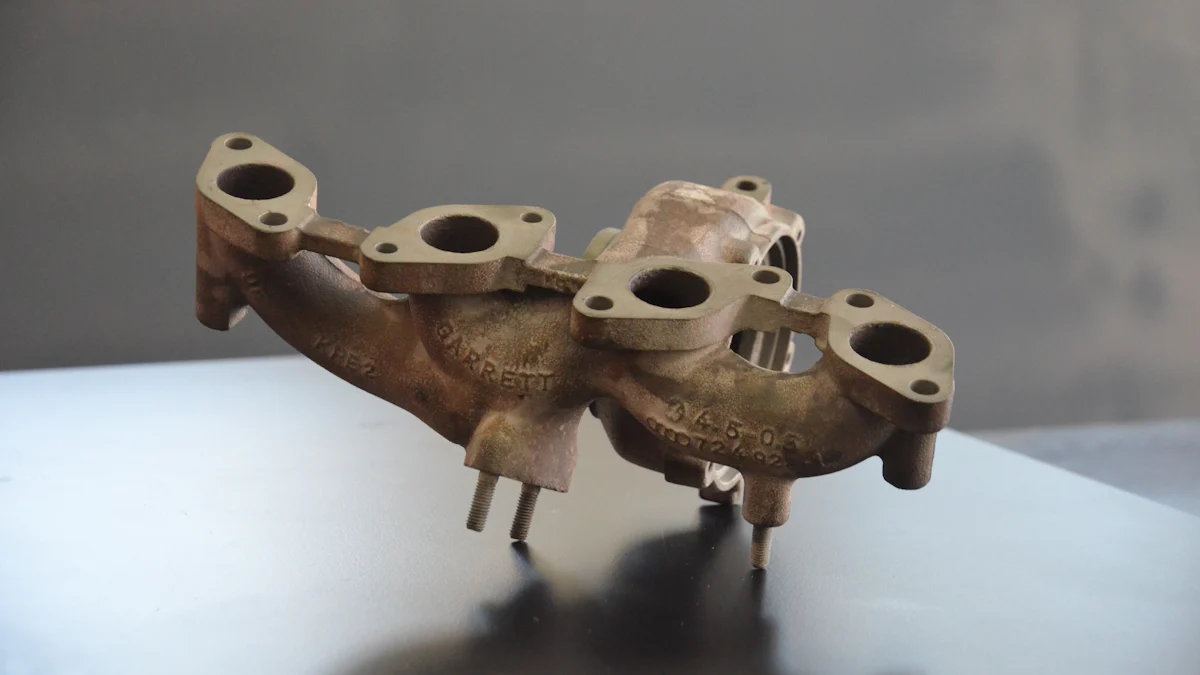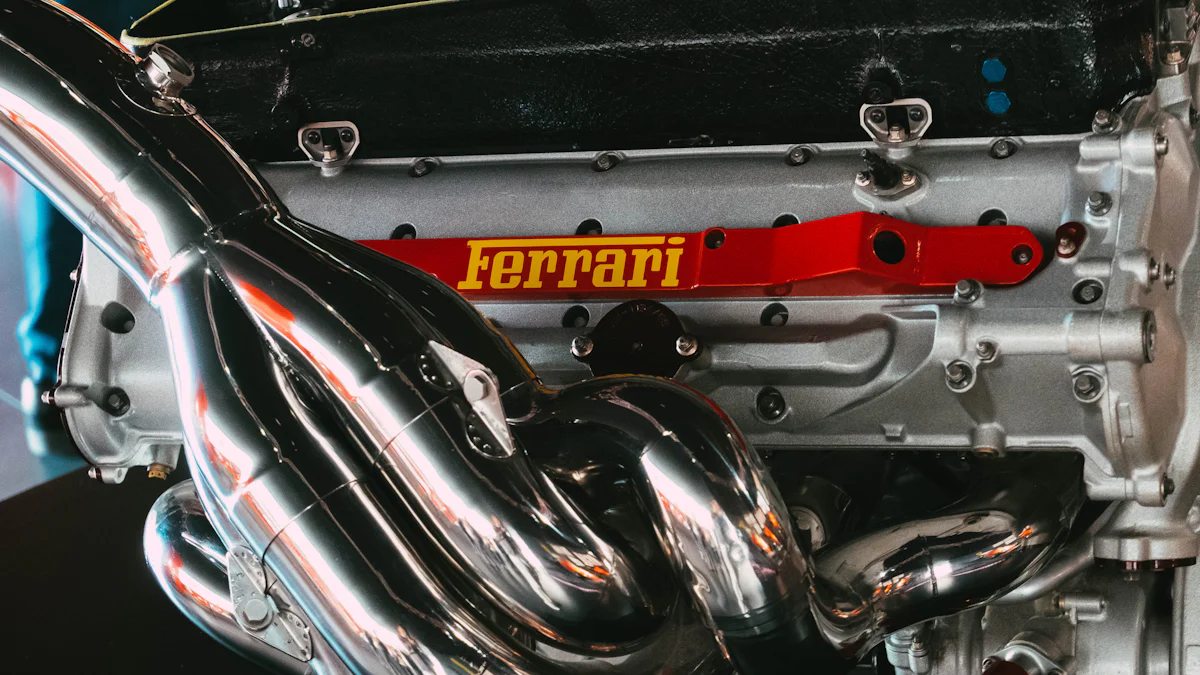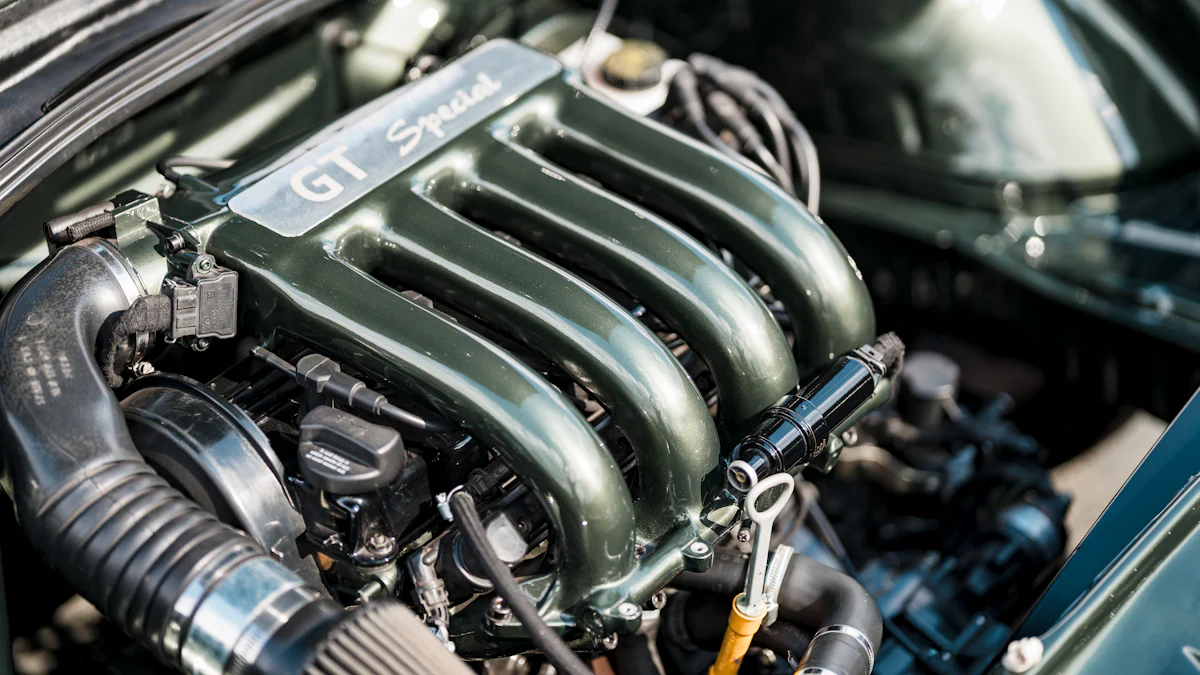
In the realm of automotive engineering, manifolds play a pivotal role in optimizing a car’s engine performance. The exhaust manifold and intake manifold are key components that ensure efficient operation. The Engine exhaust manifold directs hot gases away from the engine, while the intake manifold distributes the vital fuel-air mixture to the cylinders. This blog delves into the nuances of these crucial elements, comparing their functions in the context of exhaust manifold vs intake manifold and highlighting their significance in enhancing overall engine efficiency.
Exhaust Manifolds

Function and Importance
Exhaust manifolds are crucial components in a car’s engine system. They play a vital role in enhancing the overall engine performance by efficiently directing hot gases away from the engine. This process ensures that the combustion byproducts are effectively removed, allowing the engine to operate smoothly without any hindrances. The significance of exhaust manifolds lies in their ability to optimize the exhaust system, contributing to better engine functionality.
Role in Engine Performance
The primary function of exhaust manifolds is to collect and channel exhaust gasses produced during combustion away from the engine cylinders. By doing so, they prevent any backflow of exhaust gases into the cylinders, which could disrupt the combustion process. This uninterrupted flow of exhaust gasses is essential for maintaining optimal engine performance and efficiency.
Impact on Exhaust System
The design and quality of exhaust manifolds have a direct impact on the overall exhaust system performance. Upgrading to high-performance exhaust manifolds can significantly enhance the efficiency of the exhaust system, leading to improved power output and fuel economy. Moreover, custom exhaust manifolds are tailored to specific performance requirements, ensuring that they not only look aesthetically pleasing but also contribute to reducing emissions and optimizing overall engine functionality.
Types of Exhaust Manifolds
When it comes to types of exhaust manifolds, there are several options available in the market to cater to different needs and preferences.
Cast Iron Manifolds
Cast iron manifolds are traditional yet reliable components commonly found in stock vehicles. While they may lack some performance benefits compared to other types, they provide durability and longevity, making them a popular choice for everyday driving.
Headers
On the other hand, headers offer enhanced performance capabilities due to their design that reduces exhaust backpressure. This allows the engine to breathe more easily, resulting in improved power delivery and efficiency. Headers are usually made from thin-walled stainless steel tubing, ensuring both durability and optimal airflow within the exhaust system.
Common Issues and Maintenance
Like any other automotive component, exhaust manifolds are prone to wear and tear over time. Recognizing early signs of damage is crucial for maintaining engine health.
Signs of Damage
Common indicators of a damaged exhaust manifold include excessive engine noise, reduced engine performance, or visible cracks or leaks along its surface. Addressing these issues promptly can prevent further damage to the engine components and ensure smooth operation.
Maintenance Tips
To prolong the lifespan of your exhaust manifold, regular inspection and maintenance are key. Checking for leaks or corrosion, ensuring proper installation torque, and addressing any issues immediately can help prevent costly repairs down the line. Additionally, opting for high-quality materials when replacing or upgrading your exhaust manifold can significantly improve its longevity and performance.
Exhaust Headers Affect Performance
When it comes to headers, their impact on engine performance is undeniable. Headers offer a range of benefits that can significantly enhance the overall efficiency and power output of your vehicle. Understanding these advantages is crucial for making an informed decision when choosing the right components for your car.
Benefits of Headers
- Improved Exhaust Scavenging: Headers are designed to optimize exhaust scavenging, a process that helps extract more exhaust gases from the cylinders during the engine’s exhaust stroke. This efficient removal of gases enhances airflow and reduces backpressure, allowing the engine to breathe more easily and operate at peak performance levels.
- Enhanced Power Delivery: By reducing exhaust backpressure, headers enable the engine to expel combustion byproducts more efficiently. This improved flow not only boosts power delivery but also enhances throttle response, resulting in a more dynamic driving experience with increased acceleration capabilities.
- Increased Engine Efficiency: The enhanced airflow facilitated by headers contributes to better fuel combustion within the cylinders. This optimized combustion process leads to improved fuel efficiency, allowing you to get more mileage out of every drop of fuel and reducing overall emissions for a greener driving experience.
- Customization Options: Performance-oriented headers come in various designs and configurations, allowing you to tailor your choice based on specific performance goals or aesthetic preferences. Whether you prioritize power gains, sound enhancement, or visual appeal, there are header options available to meet your unique requirements.
Choosing the Right Headers
Selecting the appropriate set of headers for your vehicle involves considering several factors that can impact their performance and compatibility with your engine:
- Material Selection: Opt for high-quality materials like stainless steel when choosing headers to ensure durability and resistance to heat-related stress. Stainless steel offers excellent corrosion resistance and thermal properties, making it an ideal choice for high-performance applications.
- Design Considerations: Evaluate different header designs such as long-tube or short-tube variants based on your driving needs and intended use of the vehicle. Each design has its advantages in terms of power gains, torque delivery, and overall performance characteristics.
- Compatibility with Exhaust System: Ensure that the chosen headers are compatible with your existing exhaust system components to avoid any fitment issues or modifications during installation. Seamless integration will guarantee optimal performance gains without compromising other parts of the system.
- Professional Installation: To maximize the benefits of upgrading to performance-oriented headers, consider having them installed by experienced professionals who can ensure proper fitment and alignment with your engine’s specifications.
Intake Manifolds

Function and Importance
Intake manifolds are vital components in an engine’s system, responsible for ensuring optimal air distribution to the cylinders. Their significance lies in their direct impact on engine efficiency, influencing the combustion process and overall performance.
Role in Air Distribution
The primary function of intake manifolds is to evenly distribute the air-fuel mixture to each cylinder, facilitating efficient combustion. By regulating the airflow, they ensure that each cylinder receives the necessary fuel mixture for combustion, optimizing engine operation.
Impact on Engine Efficiency
Intake manifolds play a crucial role in enhancing engine efficiency by controlling the air intake process. A well-designed manifold can improve fuel combustion within the cylinders, leading to increased power output and better fuel economy. This optimization contributes to a smoother engine operation and overall performance.
Types of Intake Manifolds
When it comes to types of intake manifolds, there are distinctions that cater to different needs and preferences.
Single Plane vs Dual Plane
- Single Plane: Offers a simpler design with a single intake path, suitable for high-RPM performance applications.
- Dual Plane: Features separate intake paths for each cylinder bank, providing improved low-end torque and throttle response.
Material Differences
- High-quality materials like aluminum or composite are commonly used in modern intake manifold construction.
- Aluminum manifolds offer lightweight durability, while composite variants provide enhanced heat insulation properties.
Common Issues and Maintenance
Recognizing signs of damage and implementing proper maintenance practices are essential for preserving the functionality of intake manifolds.
Signs of Damage
- Reduced engine performance
- Irregular idling
- Increased fuel consumption
Maintenance Tips
- Regularly inspect for leaks or cracks
- Clean intake ports to prevent carbon buildup
- Ensure proper gasket sealing for air-tight connections
By adhering to these maintenance practices, you can prolong the lifespan and optimize the performance of your intake manifold effectively.
Intake and Exhaust Coordination
When considering the coordination between the intake and exhaust systems in an engine, a delicate balance must be maintained to ensure optimal performance. The airflow management plays a critical role in this synergy, influencing how efficiently the engine operates and delivers power.
Balancing Airflow
Achieving a harmonious balance in airflow distribution is essential for maximizing engine efficiency. By regulating the intake of air-fuel mixture into the cylinders and effectively expelling exhaust gases through the manifold system, the engine can function seamlessly. This equilibrium ensures that each cylinder receives the necessary components for combustion, leading to consistent performance output.
To illustrate this point further, consider the comparison between OEM-supplied cast iron exhaust manifolds and high-performance aftermarket headers. While cast iron manifolds focus on cost-effectiveness and space conservation, headers prioritize power production and efficiency. This distinction underscores how different components impact airflow management within the engine system.
Impact on Performance
The coordination between the intake and exhaust systems directly influences overall engine performance. When airflow is optimized through well-designed manifolds, combustion efficiency improves, resulting in enhanced power delivery and fuel economy. The seamless integration of these components ensures that the engine operates at peak levels, translating into a smoother driving experience for enthusiasts.
By understanding how intake and exhaust systems work together to regulate airflow within the engine, drivers can make informed decisions when upgrading or customizing their vehicles. Whether prioritizing power gains or fuel efficiency, selecting the right components is crucial for achieving desired performance outcomes.
Exhaust Manifold vs Intake Manifold
Key Differences
Functionality
When comparing exhaust manifolds to intake manifolds, it is essential to understand their distinct functionalities within the car’s engine. The engine exhaust manifold primarily focuses on directing hot gases away from the engine, ensuring a smooth operation by eliminating combustion byproducts efficiently. On the other hand, the intake manifold serves as the gateway for the air-fuel mixture, distributing it evenly to each cylinder for combustion. These functions are integral to optimizing engine power, efficiency, and overall performance.
Material and Design
In terms of material and design, exhaust manifolds and intake manifolds exhibit unique characteristics tailored to their specific roles in the engine system. Performance-oriented exhaust manifolds often feature equal length runners that result in complex shapes, demanding manufacturing procedures that drive up product prices. Conversely, intake manifold manufacturers offer various options to ensure optimal airflow characteristics and minimize pressure losses. The design intricacies of these components directly impact engine efficiency and power delivery.
Performance Impact
How Each Affects Engine Performance
The performance impact of exhaust manifolds and intake manifolds is profound, influencing key aspects of engine functionality. Upgrading to high-performance exhaust manifolds can significantly enhance power output and fuel economy by optimizing exhaust system efficiency. Similarly, a well-designed intake manifold improves airflow characteristics, leading to better combustion processes within the cylinders. These enhancements translate into increased engine power, efficiency gains, and overall performance improvements.
Choosing Based on Needs
When selecting between an exhaust manifold or an intake manifold, drivers should consider their specific needs and performance goals. Opting for headers over cast iron manifolds can provide benefits such as improved exhaust scavenging, enhanced power delivery, increased engine efficiency, and customization options based on individual preferences or driving requirements. Similarly, choosing between single-plane or dual-plane intake manifolds depends on whether low-end torque or high-RPM performance is prioritized.
Expert Opinions
Insights from Automotive Specialists
According to automotive specialists in the field of engineering and performance optimization, the choice between an exhaust manifold versus an intake manifold should align with the driver’s desired outcomes for their vehicle. Experts emphasize the importance of selecting components that complement each other harmoniously to achieve optimal engine performance levels. By consulting with professionals in automotive engineering, drivers can gain valuable insights into maximizing their vehicle’s potential through strategic component choices.
Recommendations
Based on expert recommendations from industry professionals specializing in automotive engineering and performance enhancement, it is advised to prioritize quality materials and precision design when investing in new exhaust or intake manifolds. Selecting components that cater to specific performance needs while considering compatibility with existing systems can lead to significant improvements in engine power delivery and overall efficiency. Additionally, seeking guidance from reputable automotive specialists ensures informed decisions that align with long-term performance objectives.
- Highlighting the main disparities between exhaust and intake manifolds is crucial for understanding their distinct roles in engine optimization.
- Emphasize the significance of selecting the appropriate manifold to enhance overall performance and efficiency.
- Future trends in manifold technology are leaning towards advanced designs that prioritize both power output and fuel economy, catering to evolving automotive demands.
Post time: Jun-12-2024



